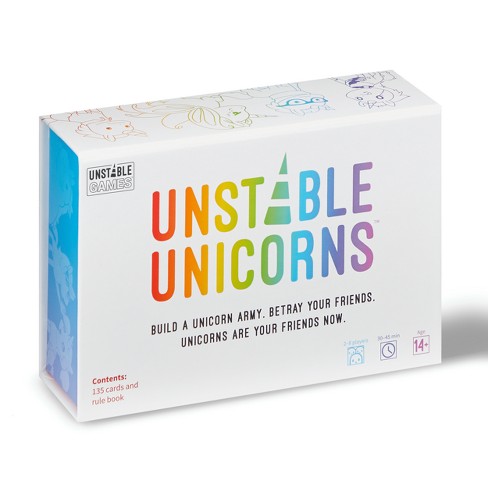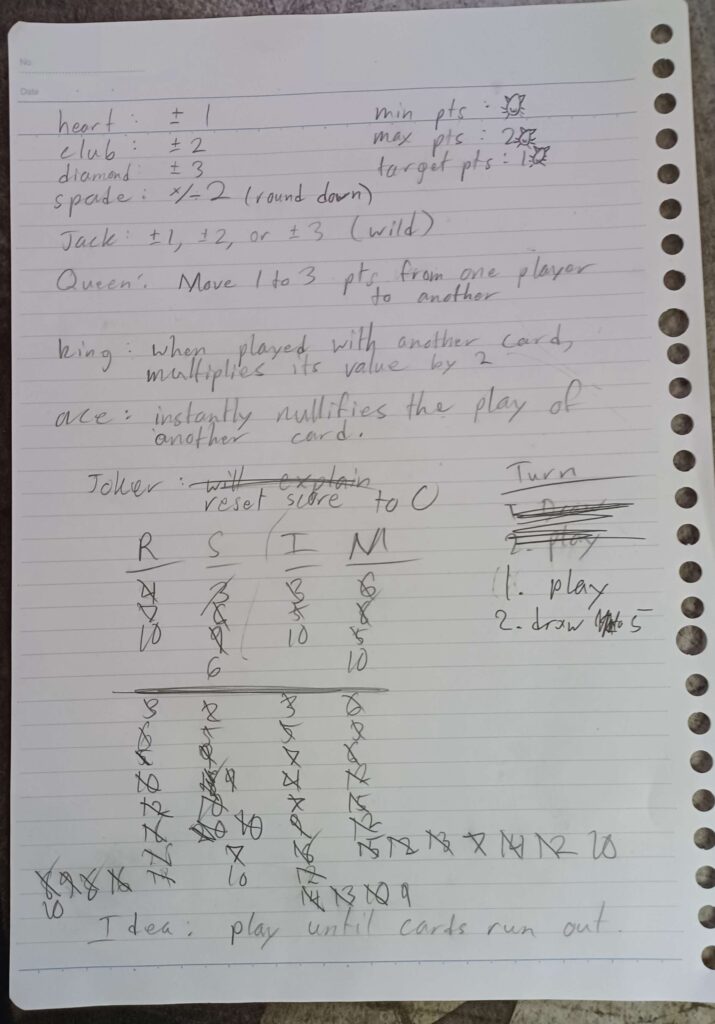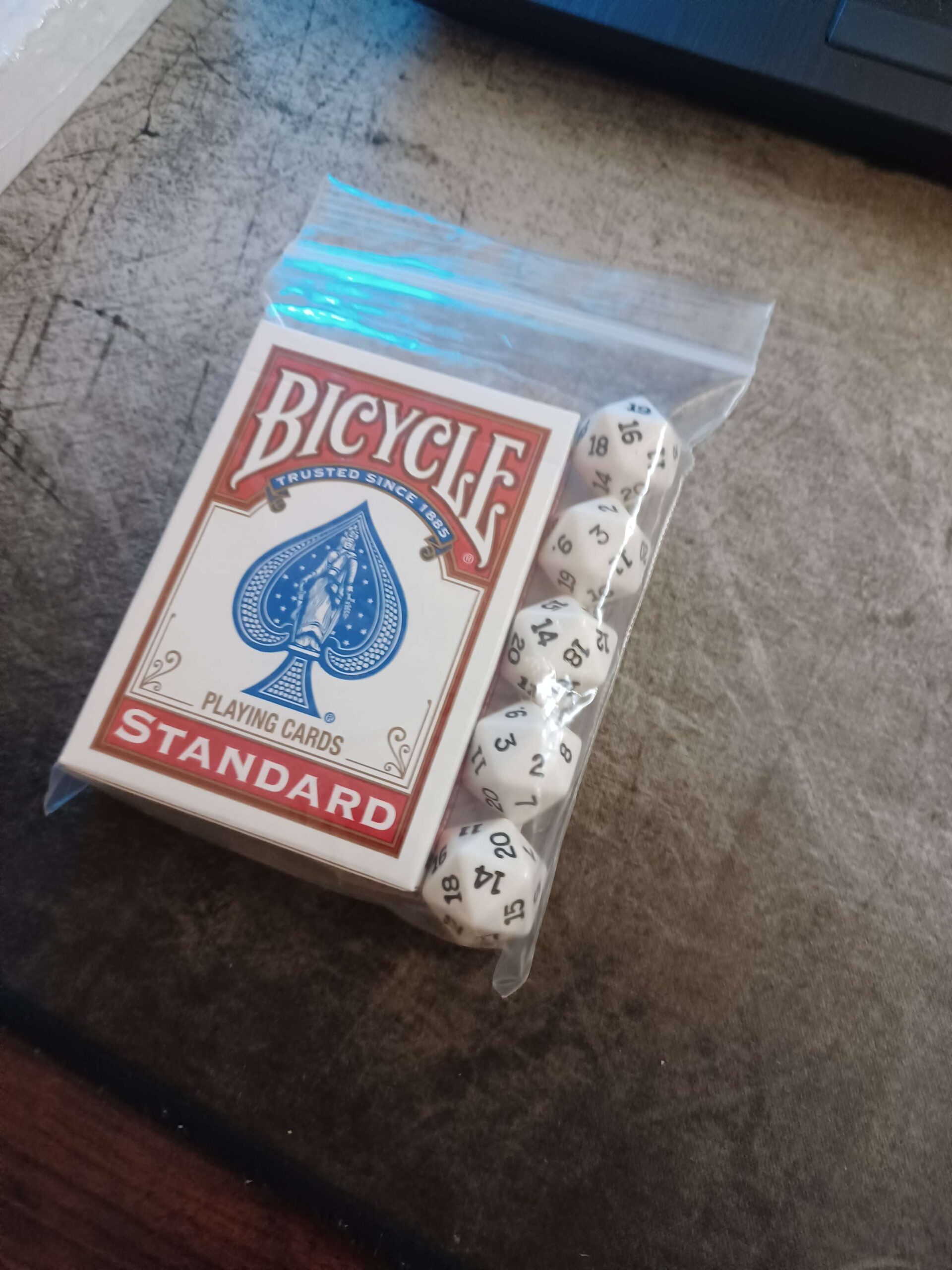Process Report: Target
This project, Target, is a card game utilizing a standard deck of cards with various effects attached to the cards in play. Through limitations of a personal point count, you may use your own cards to either add, subtract, multiply, divide, or even steal count values to keep yourself within the count limit while forcing other players out of the game. The win conditions are either to eliminate all other players by bringing their counts above the limit of 20, or by the final play of cards, have the final count closest to the number 10.
Initial Game References
Our game took inspiration mainly from the two games Unstable Unicorns, and Taco vs Burrito. These games, while different in win conditions and finer mechanics, both had card style play that focused on a certain “value” that one holds. For Unicorns, one had to increase the amount of unicorn cards in their possession up to 7 in order to win, with many interplaying card mechanics to steal, swap and even eliminate unicorns entirely. In the case of Taco vs Burrito, one through interfering with the other player’s point value as well as their own, tries to end the game with the most amount of points possible. This is the game that we took the most inspiration from.


First Meeting
After playing the two reference games, we discussed what we liked:
- interaction between players that can result in either supporting yourself or hindering the opponent
- The interaction of deciding when you should spend a valuable turn to benefit yourself but allow the opponent to get another step ahead, or the other way around.
- We also enjoyed how cards could be played in succession in order to further compound effects of the previous ones to further your position in relation to the player.
- The usage of cancellation cards to prevent obscenely overpowered combinations at certain points in the game made a fun mind game of taking risks of when to use such combinations as well as your valuable cancel card.
Through these ideas, we decided to start forming a game revolving around a standard deck of cards with the intention of staying within a certain boundary of numbers that can result in your elimination. We decided to create an interactive PvP game by implementing adding and subtracting point values based on card suits and extra effects such as stealing and compounding through face cards. The main goal of the player was to reach the middle value within the boundary first.
Second Meeting
Before the meeting, we set a few general boundaries for our game to exist within. The point boundary for the game would be between 0 to 20. This would make the value needed to be reached 10. We implemented general values such as cards adding and subtracting 1-3 based on the suit, stealing 5 points, multiplying values and more
In this meeting, we decided on the values we wanted cards to take when we truly put them to the test.
We made basic ideas for the all cards implemented into the game
- Cards are determined by suits rather than number(except the face cards)
- Hearts +- 1
- Clubs +-2
- Diamonds +-3
- Spades x/ 2
- Ace(cancel card effects)
- Jack(adding or subtracting 1-3 points from another player)
- Queen(stealing and then moving points from a player to another)
- King(doubling card values or (swapping hands: not used in final product))
- Joker(breaking limit: not used in end product)
We tested a bit ourselves, and Rachel brought the game to her friends in order to not only see issues in the mechanics, but also see how the game would fare in a 4+ player situation. Through this testing, we found and implemented:
- The idea of continuing the game until the last card played. If the condition of winning was solely getting to 10, the game was too short, easy and even boring. So, we chose for the game to continue until all cards were played, and then declaring the winner to be the person closest to 10.
- The idea of eliminating players whose counts exceed 20. After a friend misunderstood the rules by thinking that a player is eliminated once their count exceeds 20, we liked that idea so much we added it to the game.
- The idea of the cancelation effect of the ace when interacting with the king only nullifying the king’s effect. That way, the ace isn’t an outright counter to every single action in the game, and players are no longer punished for attempting to use kings.
- The idea of reversing the order in which a player draws, and then plays a card. This way, a player draws after they play a card so that if the player plays an ace on another person’s turn, that card will not be replenished until the end of their next turn.
- Tried rule that Jokers reset score to 0 (Inspired by Taco vs Burrito). However, in a scenario of less than 4 players, the function of a joker is a bit unfair.

Third Meeting
This was our longest gameplay testing session with two players and we found our main final issues to address and correct:
- We implemented the ideas formed by Rachel and her friends into our gameplay
- Hearts when playing with two people slows down the game too much and lessens risk as well as ability to counter higher value cards, so all heart cards valued 2-10 would be cut from any two player game.
Through these new additions, the game could now involve more back and forth of weighing personal risk over opponent elimination.
Final Meeting
We met up to finally fine tune a few possible kinks and get the final product’s ideas together.
- Should all cards in one’s hand consist of kings and aces at the first shuffle, reshuffle your hand into the pile, and draw 5 new cards instead.
Challenges
The biggest challenge that we faced when creating this game was the amount of elements needed to be included but also removed in order to balance the game into one that encourages risk-taking. Our initial iterations made the ability to get to a certain number far too easy with the combination of a few cards, so by implementing the number limit as a loss condition, we were able to avoid easy ways to reach the value 10. Furthermore, by making the game end when all cards have been played, we force players to look ahead into the game and decide what cards in their hand will be valuable moving forward in the game to ensure that they end up at the number value that they desire.
While our initial goal was to form a game more in line with Unstable Unicorns with various key cards that can be manipulated by effect cards, we found that through specific designs of even simple rules of the basic order of operations, we could form a balanced, and engaging game to play for multiple people at once. Despite lacking in the artistic department with us only sticking to the idea of using a standard card deck, we feel that the gameplay we were able to create thanks to not focusing on such visual features is more satisfactory than were we to pursue the artistic route.
All in all, we are very happy with the final product of Target and hope you all will enjoy the gameplay that we have laid out.
